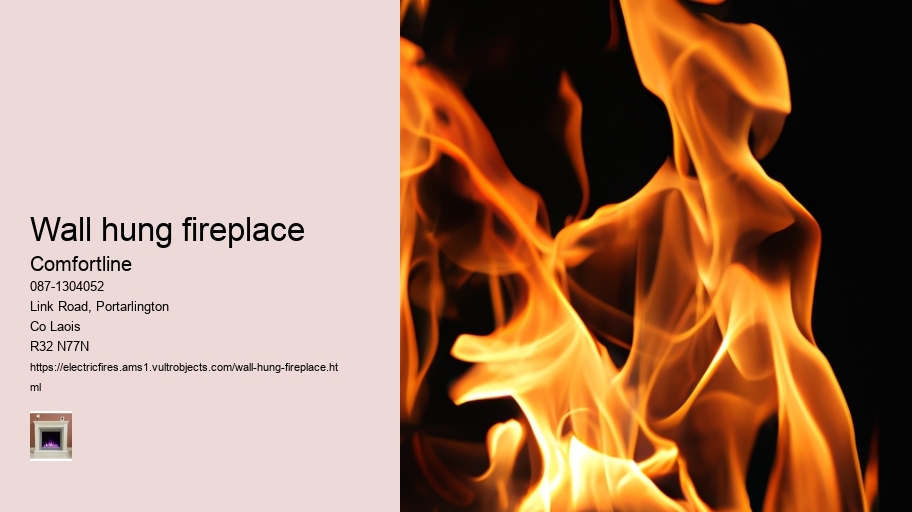

Popular Electric Fire Models
Electric fires do not produce real flames; instead, they simulate the appearance of flames using advanced LED lighting and visual effects.
Another key tip is maintaining the heater and ensuring it operates at peak performance. - Recessed electric fire Regularly clean any dust or debris from the unit, and check for any signs of wear and tear that could affect its efficiency.
Electric fires make use of advanced LED technologies to produce lifelike flame visuals, offering an enchanting presentation that can be customized to complement any mood or event.
Electric fires present a compelling alternative to traditional fireplaces. They offer significant advantages such as the elimination of chimney requirements, versatile design options, and instant heat and flame effects.
Implementing energy-saving strategies can further mitigate expenses. Ultimately, electric fires can be a financially viable heating solution for Irish households when managed efficiently and chosen with consideration of specific needs.
Yes, electric fires do provide heat. Here are some key points regarding the heating capabilities of electric fires:
Electric fires use a heating element, usually a coil or ceramic heater, to produce heat. This element heats up when electricity passes through it, and the heat is then dispersed into the room, typically with the aid of a fan.
The heat output of electric fires can vary, but many models are capable of providing between 1 kW to 2 kW of heat, which is sufficient to warm a small to medium-sized room. Some advanced models may offer higher heat outputs.
Many electric fires come with adjustable heat settings, allowing you to control the amount of heat they produce. This feature provides flexibility to maintain a comfortable temperature in the room.
Electric fires are generally used as supplemental heating sources. They can effectively add warmth to specific areas of a home, but they may not be suitable as the primary heating source for large spaces or entire homes.
Electric fires are highly efficient because they convert nearly all the electricity they use into heat. However, the cost of operating an electric fire will depend on local electricity rates.
Many electric fires offer a flame-only mode, which allows you to enjoy the visual effect of a fire without producing heat. This can be useful for ambiance during warmer months.
Modern electric fires often include safety features such as automatic shut-off when overheating, cool-to-touch surfaces, and safety cut-off switches, making them a safe option for heating.
Overall, electric fires are a practical and convenient way to provide additional heat and create a cozy atmosphere in your home.
No, an electric fire does not need a flue. Here are the reasons why:
Electric fires do not burn fuel to generate heat. Instead, they use electric heating elements to produce warmth. Since there is no combustion process, there are no combustion gases or byproducts such as smoke or carbon monoxide that need to be vented out through a flue or chimney.
Because electric fires do not require a flue, they offer greater flexibility in terms of placement within a room or home. They can be installed on almost any wall, freestanding, or even recessed without the need for extensive ductwork or ventilation systems.
The absence of a flue reduces potential hazards associated with traditional fireplaces, such as chimney fires, carbon monoxide leaks, and the buildup of creosote. Electric fires are safer to operate and maintain.
Without a flue, electric fires require minimal maintenance compared to wood-burning or gas fireplaces, which need regular cleaning and inspection of the flue or chimney to ensure safe operation.
Electric fires are very efficient, as all the electricity used is converted directly into heat for the room. There is no heat loss through a flue, which can happen with traditional fireplaces.
The installation cost for electric fires is generally lower than for gas or wood-burning fireplaces, as there is no need for flue installation, chimney construction, or extensive remodeling.
In summary, the lack of a flue requirement makes electric fires a convenient, flexible, and safe option for providing additional heat and ambiance in a home.
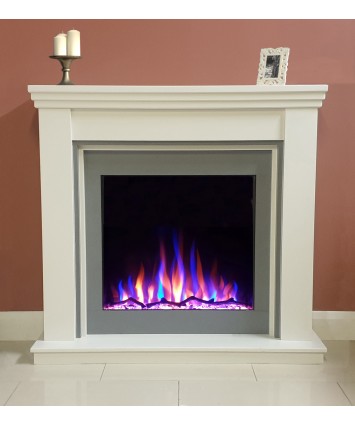
Next, placement of the heater is crucial. Position it in a central location to allow even distribution of warmth. Avoid obstructing the heater with furniture or curtains, as this can impede airflow and reduce efficiency. Additionally, using a programmable thermostat allows you to set specific temperatures for different times of the day, preventing unnecessary heating when the room is unoccupied.
Do Electric Fires Produce Real Flames?
The essence of Optiflame technology lies in its sophisticated use of light and mirrors to generate a convincing flame effect. - Multiple heat settings In contrast to conventional electric fires that simply project images of flames, Optiflame utilizes a complex blend of LED lighting and reflective surfaces to form a multi-dimensional flame with depth and movement. This method guarantees that the flames seem to dance and flicker in a highly realistic manner.
What Is the Energy Consumption of Dimplex Optiflame Fires?
The maintenance requirements for an electric fire are minimal compared to traditional fireplaces. Regular tasks include dusting the exterior and cleaning the glass front with a non-abrasive cleaner.
Gazco's eStudio and eReflex ranges are also highly regarded. These models incorporate Chromalight LED systems, providing enchanting flame visuals and a variety of fuel effects. The Gazco eReflex series, in particular, combines aesthetic appeal with practical heating, delivering up to 2kW of ambient warmth.
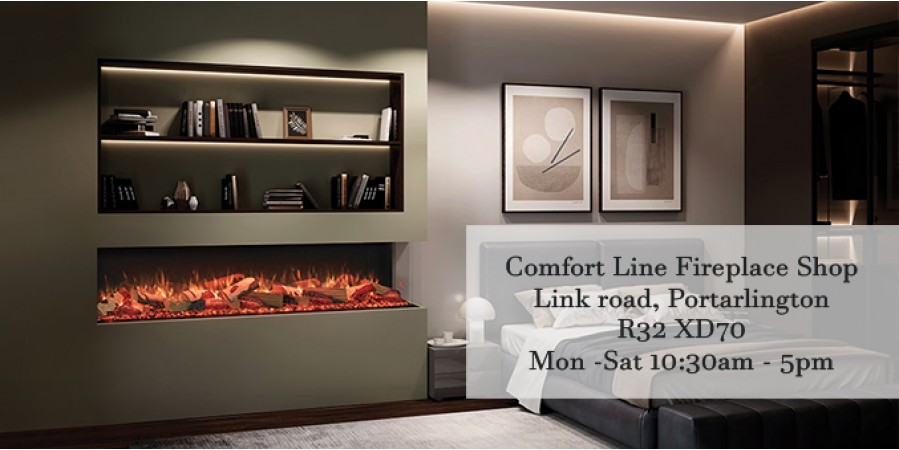
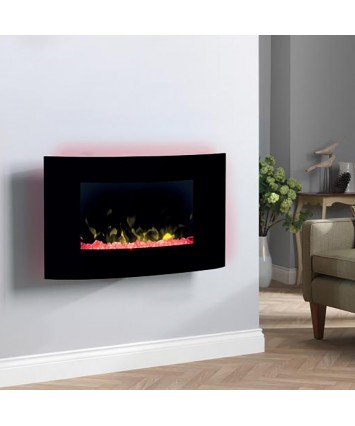
Electric fires are generally safe for homes with pets due to their enclosed heating elements and lack of open flames. Brands like Ellere, Gazco, and Evonic incorporate advanced safety features such as thermostatic controls, remote operation, and cool-touch glass.
Typically, a 5kW heater can raise the temperature of a well-insulated, medium-sized room (approximately 20-30 square meters) within 15-30 minutes. However, factors such as outdoor temperature and heat loss can influence this time frame, making it essential to take these conditions into account for accurate estimation.
The initial cost of an electric fire can vary widely based on size, design, and technological features. While basic models may be affordable, high-end versions with advanced features like remote control, adjustable flame effects, and app compatibility can be notably pricier. Hence, balancing upfront costs with expected energy savings is essential for making a cost-effective decision.
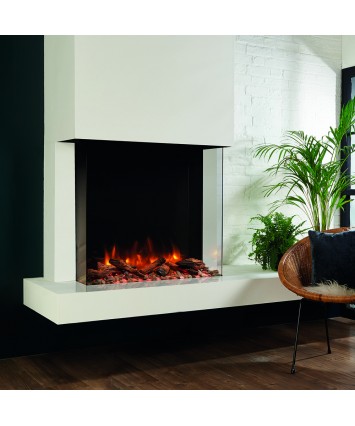
Freestanding units such as the Evonic E-Series combine state-of-the-art technology with portability, allowing for flexibility in placement and interior design changes. These models often feature bespoke fuel beds and innovative flame technologies that create a stunning visual focus.
Electric fires are generally more energy-efficient compared to gas and wood fireplaces.
Freestanding electric fires, such as those from Amber Glow, provide flexibility in placement and are easy to set up. These units mimic traditional wood-burning stoves or fireplaces and are perfect for adding a cozy touch to any room.
In addition to offering instant warmth and captivating flame effects, modern electric fires are also celebrated for their impressive energy efficiency. Unlike traditional fireplaces, which can lose a significant amount of heat through chimneys and flues, electric fires convert nearly all the electricity they consume directly into heat. This guarantees that the energy utilized is maximized, reducing wastage and enhancing overall efficiency.
High-quality models, such as those from Gazco, Dimplex, and Evonic, are designed with durable components and advanced technology, ensuring longevity. Additionally, features like LED lighting and remote control systems contribute to the overall durability and functionality of these appliances.
Versatile Design Options

Electric fireplaces are generally very energy-efficient, converting nearly all the electricity used into heat, making them a cost-effective heating solution.